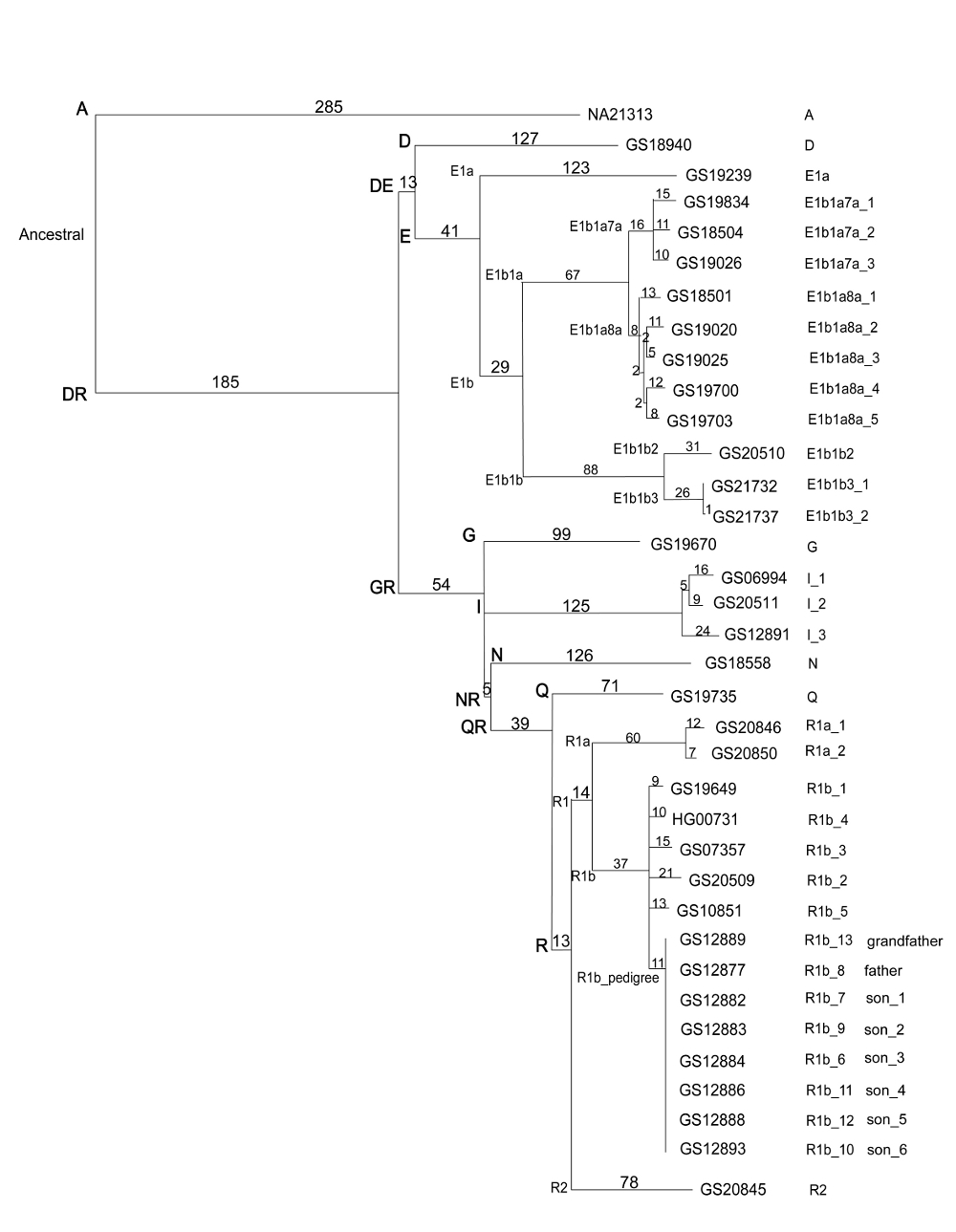The biggest expansion of man in prehistory?

This is the first time researchers have used the information from large-scale DNA sequencing to create an accurate family tree of the Y chromosome, from which the inferences about human population history could be made. Since the Y chromosome is found only in men, its history and evolution are easy to study and interpret.
This study also highlights how information generated by other genetic studies, in this case by the company Complete Genomics, can be used to investigate human genetic archaeology. The lengths between the branches and the length of each branch on the Y chromosome family tree provide insights into the evolution of the human population. The closer the branches are, the more rapidly the population was expanding and separating, most likely into different geographic areas. The longer the branch length, the greater the time that group of people have been separated from the other groups.
“We have always considered the expansion of humans out of Africa as being the largest population expansion of modern humans, but our research questions this theory. “The out-of-Africa expansion, which happened approximately 60,000 years ago, was extremely large in geographical terms with humans spreading around the globe. Now we’ve found a second wave of expansion that is much larger in terms of human population growth and occurred over a very short period, somewhere between 40,000 to 50,000 years ago.”
Ms Wei Wei First author from the Wellcome Trust Sanger Institute and the West China University of Medical Sciences
There is no obvious archaeological event that would explain why this sudden expansion in the human population occurred. One possible theory is that during the original out-of-Africa expansion, humans moved along the coastlines of the world, settling as they went. Their origins and genetic makeup would mean that these people were suited to coastal life, but not to the demands of living inland. This would have prevented large population growth as the coasts could only sustain a certain number of people.
“We think this second, previously unknown population boom, may have occurred as humans adapted to their new environment after the first out-of-Africa expansion. We think that when humans moved from the horn of Africa to Asia, Australia and eventually Europe, they remained in small groups by the coasts. It took them tens of thousands of years to adapt to the mountainous, forested surroundings on the inner continents. However, once their genetic makeup was suited to these new environments, the population increased extremely rapidly as the groups travelled inland and took advantage of the abundance of space and food.”
Dr Qasim Ayub Lead author from the Wellcome Trust Sanger institute
The work highlights how it is now possible to obtain new biological insights from existing DNA sequencing data sets, and the value of sharing data. The majority of the DNA information used for this study was obtained from freely-available online data-sets.
“We have provided a nearly ten-fold increase in the number of genetic markers found on Y chromosomes and discovered new historical insights into the evolution of modern humans using DNA sequencing information from just 36 men. We now want to look at ten times this number of Y chromosomes in data from the 1000 Genomes Project. Who knows what we will find then?”
Dr Chris Tyler-Smith Lead author from the Wellcome Trust Sanger Institute
More information
Funding
This work was supported by The Wellcome Trust and a China Scholarship Council.
Participating Centres
- The Wellcome Trust Sanger Institute, Hinxton, Cambs. CB10 1SA, UK
- Department of Forensic Genetics, School of Basic Science and Forensic Medicine, Sichuan University (West China University of Medical Sciences), Chengdu, 610041, Sichuan, PR China
- Center for Integrated Fungal Research, Department of Plant Pathology, North Carolina State University, Raleigh, NC 27695-7244, USA
Publications:
Selected websites
The Wellcome Trust Sanger Institute
The Wellcome Trust Sanger Institute is one of the world’s leading genome centres. Through its ability to conduct research at scale, it is able to engage in bold and long-term exploratory projects that are designed to influence and empower medical science globally. Institute research findings, generated through its own research programmes and through its leading role in international consortia, are being used to develop new diagnostics and treatments for human disease.
The Wellcome Trust
The Wellcome Trust is a global charitable foundation dedicated to achieving extraordinary improvements in human and animal health. We support the brightest minds in biomedical research and the medical humanities. Our breadth of support includes public engagement, education and the application of research to improve health. We are independent of both political and commercial interests.


